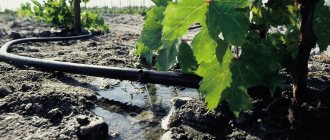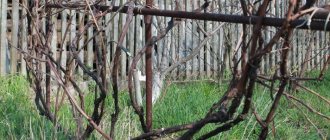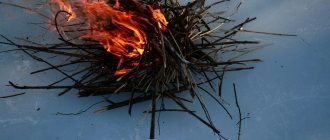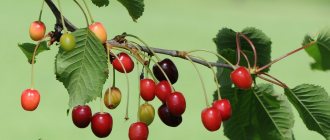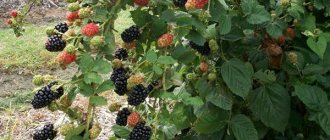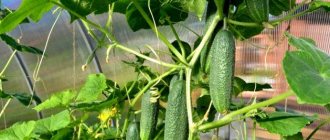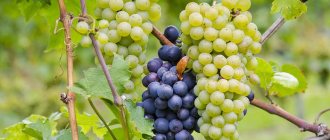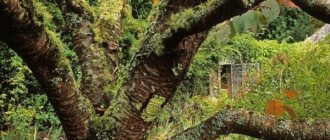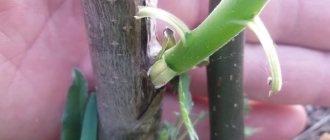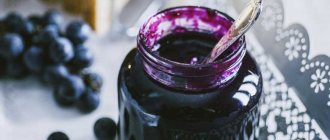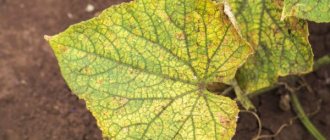Grape pinching: what is it, when and why do they need to be removed
Stepchildren are additional shoots that appear from the axils of the leaves (stepchildren or axillary shoots).
Do stepchildren need to be removed?
Important! Grape bushes must have stepson leaves, as they accelerate photosynthesis. The main leaves become obsolete by the time the berries are filled and saturated with sugars, so pinching is necessary.
That is, the formation of stepsons is a natural process in the development of grape bushes. The stepchildren themselves grow differently. It all depends on the variety, load, agricultural background, weather conditions, etc.
Important! But stepsons develop weakly on bushes that are optimally loaded with shoots and harvest. And if there are a lot of them, this indicates that the bushes are underloaded.
The stepsons begin to grow especially actively after pinching (before or at the beginning of flowering) and chasing the grapes.
Learn more about pinching and minting grapes in the article: Minting grapes in summer and autumn: how to properly mint shoots in July and August.
Extra shoots shade the bushes and take away nutrition from the plant. Because of this, the grapes are poorly ventilated and can be affected by fungal diseases - oidium or mildew.
Important! To feed grapes, a lot of leaves are good only in normal lighting. When the bush is shaded and thickened with stepson shoots and leaves, photosynthesis slows down.
Therefore, periodically from the end of spring and throughout the season, it is necessary to remove the stepsons. They are cut with pruning shears or pinched with nails.
Important! If grapes are minted in the summer, you need to leave a lot of stepson leaves. This is necessary for good ripening of the bunches (about 25 leaves are needed per 1 kg of grapes).
What is grape chasing read: How to properly mint grapes in summer and autumn (July and August) - tips on summer pruning for beginning winegrowers
It is better to remove the stepsons while they are still green, before they become lignified. At this time, they easily break off, the vine is not injured. At the same time, the growing vines are also tied to the trellis. Thus, the stepsons do not grow back, the grapes do not become overgrown and are not affected by diseases.
Watch the video! Seedling of grapes from adult fruiting bushes
What happens if you don’t do stepsoning?
In 2021, when there was a hurricane with rain and hail, many gardeners’ grapes were chopped up; as an experiment, stepsons were left on the vine in one of the plots. But the experiment brought nothing but torment. A first-order bud grows, it produces a stepson, the stepson grows, if it is not removed, it continues to grow. I had to constantly remove the stepsons.
| The stepson leaf helps bud development. But there is enough time for a bud to form without a stepson. It’s better to remove the stepsons altogether. |
Photo: Kidney of the first order
You need to prune the bush gradually, not at once, as it grows. If you leave them, everything will become overgrown, there will be a lot of vegetative mass, but the berries will not be normal. Either it will not ripen and will be sour.
_______________________________
Step-sonning is a very serious and necessary operation. There are other ways. You can do ringing, twisting a shoot with a leaf. But these are not as effective methods as pinching and breaking out.
_______________________________
The shoots should not be allowed to grow too large. It turns out that the plant will spend a lot of nutrients on them.
Photo: Process of removing stepchildren
How to properly plant grapes: methods of planting
Often, beginning winegrowers remove the shoots completely, breaking them off at the base. However, all stepchildren cannot be deleted, and one point must also be taken into account.
Interesting! In the axil of the leaf, together with the stepson, an eye with central and lateral buds is formed. Next year the eye will produce a fruitful shoot. If you completely break out the stepson, then the central bud (the strongest) will wake up and begin to grow this year. And next year weaker side buds will wake up.
Therefore, if the stepson shoot is not broken out, but pinched, it does not allow the central bud to wake up this year.
There is no point in preserving overwintering buds if the fruit-bearing vine is completely cut off to the replacement knot. However, most often, not the entire fruit-bearing vine is pruned, leaving a part, so some of the overwintering buds must be preserved. In addition, part of the vine is needed for harvesting cuttings in the fall.
Thus, you can break out the stepsons completely, but after 10 days a new stepson will appear in the same place from the central bud, so the procedure will have to be repeated.
Advice! The more leaves are illuminated, the more organic substances they synthesize. However, if the leaves on the stepsons interfere with something (lighting, ventilation), they must be removed.
The classic method of stepsoning
The classic stepson method consists of the following actions:
- The upper stepsons, located above the bunches, are pinched after the 2nd leaf (if second-order stepsons appear, they must be completely plucked out).
Interesting! Some believe that it is necessary to leave 2 leaves - 1 main and 1 on the stepson shoot, others - that 3 leaves - 1 main and 2 on the stepson shoot.
- The lower stepsons, located below the bunches, are broken off completely, or 1 leaf is left (the second-order stepchildren are completely plucked out).
Second method (1 sheet is left on stepsons of the 2nd, 3rd and 4th orders)
Important! It is necessary to leave a lot of leaves, i.e. the short length of the main vine is compensated by stepsons of 2-4 leaves. For example, during summer chasing up to the height of the trellis.
Technology:
- We must wait for the stepson shoots to grow.
- After this, 1 leaf is left on each stepson, the rest is cut off.
However, for better yield, there should be 2-4 leaves on the shoot, but only 1 remains. What to do in this case?
A stepson shoot is formed in the axil of each leaf. That is, a new stepson also forms in the axil of the left leaf. This will be a second-order stepson.
Next, from the leaf axil of the second-order stepson, a third-order stepson is formed, etc. Therefore, 1 leaf is left on each stepson and pinched above it. As a result, at the end of the growing season there will be 2-4 productive leaves.
Third method (leave stepchildren with 2-4 leaves)
On each stepson of the first order, 2-4 leaves are immediately left.
- First they let it grow, and then pinch it off after 2-4 leaves.
- When 2-4 leaves appear on the stepchildren of the second order, you need to pinch them above them, then 2-4 leaves will remain, 1-3 of which are new.
- Or do not renew the leaves at the expense of stepchildren of the 2nd order, but completely break everything out on the first stepson, since there is no need to save the eyes for next year.
Advantages of this method:
- There is no need to pick grapes often.
- There are always a lot of leaves on the bushes.
Advice! For stepchildren growing up to the grape clusters from below, it is better to leave 1 leaf, and a little higher - 2 leaves, then 3-4 leaves.
The stepsons that are located below and near the bunch should be removed only when all growth processes have shifted to the upper tier. At this time, the berries will begin to ripen and change color.
Feeding and watering for normal growth
Additional nutrition is an important stage of care in the process of cultivating all varieties. The growth of the root system, vines, shoots and the quality of the berries depend on the applied fertilizers. The necessary mixtures and solutions are supplied through the area where the main roots are located. At a distance of 0.5-0.8 meters from the main stem, a hole (trench) 40-50 centimeters deep is dug into which nutrients are introduced. When caring for young animals, experienced gardeners fertilize in three stages:
- The first feeding of the vine occurs in early spring. Add a heaping tablespoon of nitrogen fertilizer and superphosphate, 30 grams of potassium salt per plant. Nutrients are better absorbed in liquid form; it is recommended to dilute the mineral complex in a bucket of water and pour it into a hole, then cover it with soil;
- the second time, useful microelements are given 10-12 days before the flowers begin to appear, using 50 grams of superphosphate and nitrogen fertilizer and 35 grams of potassium fertilizer. Instead of mineral complexes, slurry and chicken droppings can be added at this time;
- the third application of fertilizers should be carried out at the initial moment of ripening of the berries. Only phosphorus and potassium fertilizers are used, at the rate of 2 tbsp. per plant. When using ash, the consumption rate increases by 5-8 times.
Foliar feeding is in addition to the main application of elements. The first spraying is carried out before flowering, then after the end of the flowering period, the third time is sprinkled when the berries ripen. Spraying is carried out in the evening with various drugs (Aquarin, Kemira, Plantafol, Novofert) or ash infusions.
During the summer, young growth needs good irrigation, especially when buds open, at the time of setting and growing berries. Watering immediately before and during the appearance of flowers is not advisable; irrigation can cause shedding. Watering is stopped 14-21 days before the expected harvest. To care for a vine, approximately 40-60 liters of water are required per square meter; on sandy and sandy loam soils, the volume of liquid applied is increased.
It is necessary and necessary to care for grapes in the summer, and the correct distribution of time and effort will make it easier to care for the planting, and a tasty and generous harvest will please its owner in the coming months! To organize the work correctly, you can watch a video on this topic.
Flaws
- the abundance of stepchildren, designed to provide the plant with nutrients, leads to their use not for their intended purpose, but for their own growth and development;
- excess shoots interfere with the development of the main one and slow down the ripening process, which negatively affects the quality and quantity of the future grape harvest;
- when a dense bush is formed, due to violation of the ventilation regime, there is a risk of developing fungal diseases in it;
- a large amount of foliage leads to shading of the bunches, which interferes with their ripening and disrupts the process of photosynthesis.
If you want to reap a rich harvest, read the recommendations on how to get healthy and strong shoots.
When to carry out
When and how to prune a bush so that it looks well-groomed and grows healthy? In June, it is necessary to break off fresh shoots of grapes, as well as garter the fruit-bearing vine. In the same month, replacement knots are laid. It is from them that fruit-bearing layerings should be expected to appear next year.
Experienced gardeners cut off the top of the root system in order to stimulate better full development of the lower part of the roots. The plant's tendrils serve as fastenings. Do you need to get rid of them? Some remove mustaches every day, while other gardeners do not perform this procedure. It is recommended to prune grapes in summer before and after flowering. Shortening of interfering shoots is carried out even when clusters have formed.
Read more:
- Pruning grapes for beginners. Step-by-step pruning of grapes in autumn, video and photo
- How to grow grapevines at home, photo help
- How to apply fertilizers to grapes: how to feed, photo
- neglected grape bush pruning photo
Thinning grapes
Thinning grape bunches is necessary to lighten the bush by removing part of the leaf blades. In addition to the obvious benefit of increasing plant illumination, we also provide ventilation to the vines, and, therefore, reduce the likelihood of a fungal infection.
- I do not recommend doing lightening before the brushes begin to mature.
- And in general, it is better for novice winegrowers to refuse this operation, otherwise they can remove the leaves the plant needs, thereby slowing down the ripening of the grapes.
- Let the lightening be carried out by professionals who understand whether there is a lot of foliage on the plant or not.
- After lightening, be sure to remove the leaves from the area; do not mulch the soil with them, especially near the base of the trunk, because the leaves may contain diseases that will spread to the vine.
Tips for the garden, vegetable garden and flower garden
How to water flowers during vacation or long absence
Pear diseases and the fight against them with photos of what the leaves look like
Watering strawberries during flowering and fruiting
Currently, grape growing in our country is experiencing a rebirth after the barbaric cutting down of vineyards during the anti-alcohol campaign. Owners of individual garden plots also successfully cultivate grapes. Stepping of grapes is a necessary procedure for removing stepsons on grapes, which helps reduce the growth of branches that form on the sides and improves the process of supply of nutrition to the grapevine.
Minting grapes
You need to mint the main shoots in the same way as pinching grapes, using a long knife with a curved and serrated blade like a saw. The ends of the shoots are cut off much more than when pinched. Carrying out minting helps to increase the size of the berries and make them more juicy by reducing the evaporating surface of the leaves. Therefore, table grape varieties are pruned more heavily.
There are a number of other important coinage rules. The varieties that stop growing first should be subjected to it first. In dry and hot weather, minting is carried out earlier, and in humid and cool weather - later. A bush intended for propagation by layering is not minted at all. If the tip of the shoot is bent down, then it is not yet ready for minting, as it continues to actively grow.
A sure sign of improper pinching or chasing is the abundant growth of new shoots and an increase in winter eyes.
Pros and cons of stepsoning
After the beginning of the growing season, secondary shoots grow from the main shoot. Experts evaluate secondary shoots differently, highlighting not only positive aspects, but also negative ones.
Pros:
- the green mass of plantings increases, due to which photosynthesis processes are enhanced, and nutrition becomes better;
- young leaves convert solar energy and carbon dioxide into useful substances;
- on the side branches the leaves develop later - this is a good replacement for the old foliage of the main vine.
The presence of stepsons helps to nourish the grape bunches during the ripening process. With proper care, productivity increases significantly.
Minuses:
- If growth is left unchecked, the bush will become too dense. Ventilation will be disrupted, and as a result, the plant will be affected by fungal diseases.
- Each branch wants to take the maximum space necessary for good growth. Therefore, the main vine will receive less nutrition, which is necessary for the formation of a crop.
- A well-developed branch of the second row significantly inhibits the processes of fruit ripening.
- A large volume of leaves provokes shading of the fruit. Photosynthesis and ripening of berries are disrupted.
Therefore, pinching shoots is a necessary procedure.
Rules
During the process of pinching, shoots above the 10th node are broken off, doing this before the beginning of the flowering period, after which the plant slows down its development and increases the number of ovaries. In this case, the 2 lower leaves are left, the top is torn off, removing 2-3 cm and the growth point (shoot crown), keeping 3 leaves: 2 new and 1 main.
Article on the topic: Rupestris du Lot - 5. Description of the main collection and breeding rootstocks - grapes
Correctly carried out pinching increases productivity by 25%.
The second order of stepsons is removed completely. Around the inflorescences, in the area of the clusters, it is necessary to pincer each stepson, which ensures the quality of pollination and ovary initiation.
Methods
The procedure can be performed using one of the available methods, depending on the stage of the growing season.
- At the initial stage of the appearance of stepsons, the grass sprout is thin and can be simply pinched or broken out by hand without the use of scissors or pruners. This is done by squeezing the fingers. This method of pinching is considered the simplest and most common among beginners, but not the most effective, since when removed by breaking it out, it is possible to damage the fruiting bud of reproduction, from which a new shoot immediately begins to grow, taking strength from the main one.
- The second method is to trim the top of the stepson with a tool specially designed for this, leaving 1 sheet. The remaining trimmed shoot will not interfere with full growth, but will stop the development of the bud.
- The third method is to trim the top of the stepson, which leaves 4 leaves needed to provide nutrition. Subsequently, on second-order shoots, all emerging leaves are removed to the optimal number, cutting off the tops.
